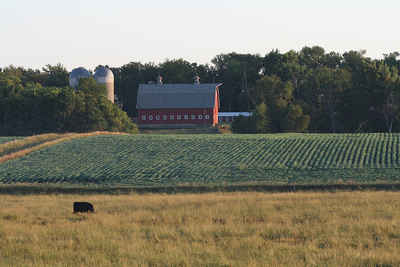Pennington County, South Dakota
Pennington County Education, Geography, and History

Pennington County is a county located in the state of South Dakota. Based on the 2010 census, the population was 100,948,making it the
second-most populous county in South Dakota. Its county seat is Rapid City. The county was created in 1875 and organized in 1877. It is named
for John L. Pennington, fifth Governor of Dakota Territory, who held office in 1875 when the county was formed.
Pennington County is included in the Rapid City, SD Metropolitan Statistical Area. It is also the location of the Mount Rushmore National
Memorial.
Etymology - Origin of Pennington County Name
Pennington is named for Governor of Dakota Territory John L. Pennington.
Demographics:
County QuickFacts: CensusBureau Quick Facts
Pennington County History
Pennington County, created in 1875 and organized in 1877, is shaped like a giant tomahawk and covers over a million and a half acres. It was named for John L. Pennington, Governor of Dakota Territory from 1874 to 1878. Governor Pennington named Commissioners in 1877 and their first meeting was held at Pactola. The commission later met at Sheridan, which was made the county seat. A vote of the people in November, 1877 made Rapid City the county seat.
Geography: Land and Water
As reported by the Census Bureau, the county has a total area of 2,784 square miles (7,211 km2), of which, 2,776 square miles (7,190 km2) of it is land and 8 square miles (21 km2) of it (0.29%) is water. Mount Rushmore National Memorial lies in the county. Harney Peak, South Dakota's highest mountain, is located in the county. At 7,242 feet it is the highest point between the Rocky Mountains and the French Alps. Part of Badlands National Park lies within the county. The park also extends into neighboring Shannon and Jackson counties.
Pennington County, South Dakota, located in the western end of South Dakota, is one of the most picturesque
counties in the state. The geology of the county is a mixture of mountains, prairie and badlands. The majority of
the western end of the county is located in the Black Hills, while the central part of the county is prairie and
grasslands. The southeastern part of Pennington County is made up of the Badlands of South Dakota, which spread into
Shannon, and Jackson counties as well. The Lakota Sioux called this part of the area Mako Sica or "land that is
bad". Researchers after studying the various formations in the area discovered that this area had been part of a
warm inland sea many millions of years ago. As the Black Hills rose up, the sea was drained and area was covered
with layers of silt, clay, sand and volcanic ash. Today those different fossil-laden layers are visible in the harsh
moonscape-like layers of eroded gullies and hills. The first humans appeared in the area approximately 10,000 years
ago.
Neighboring Counties
Bordering counties are as follows:
- Meade County, South Dakota - north
- Haakon County, South Dakota - northeast
- Jackson County, South Dakota - southeast
- Shannon County, South Dakota - south
- Custer County, South Dakota - southwest
- Weston County, Wyoming - west
- Lawrence County, South Dakota - northwest
Education







